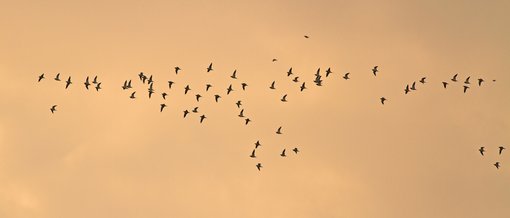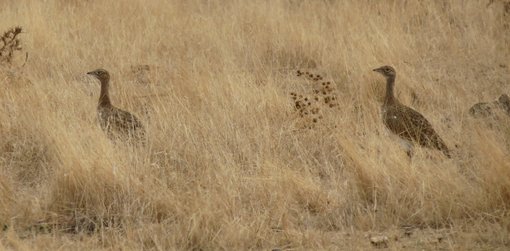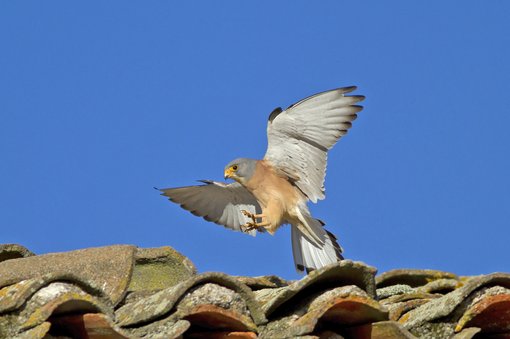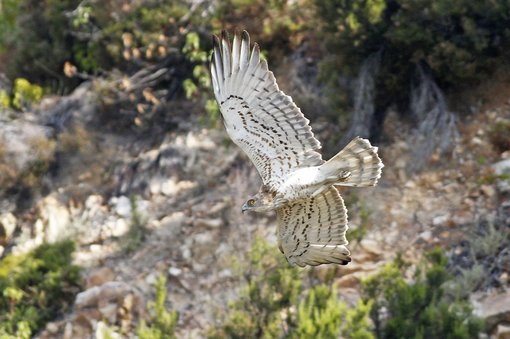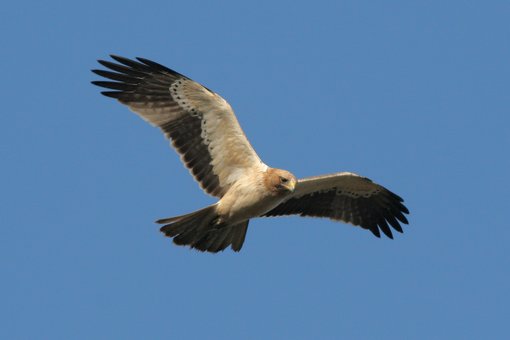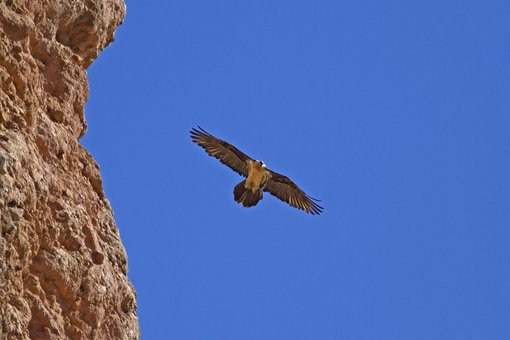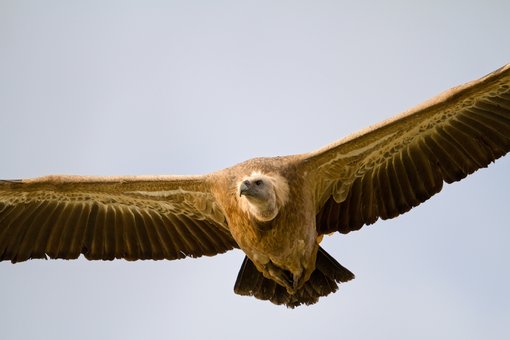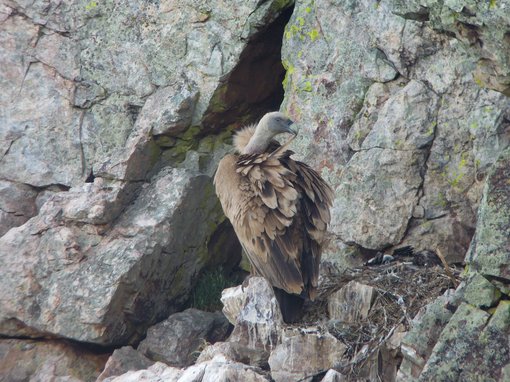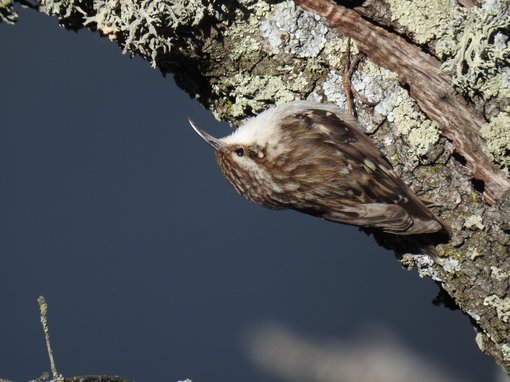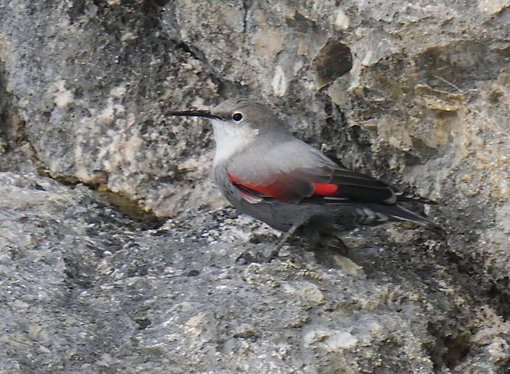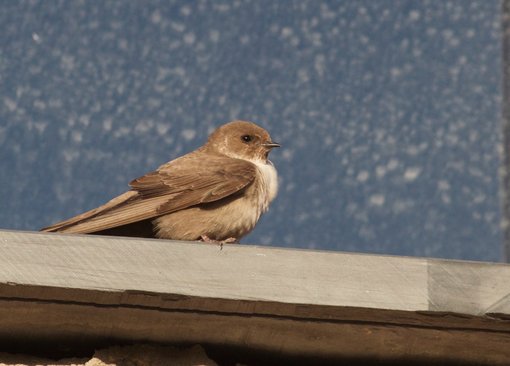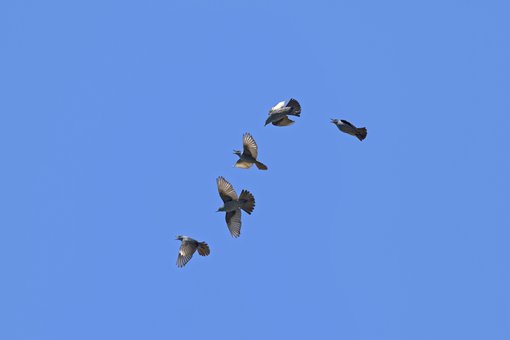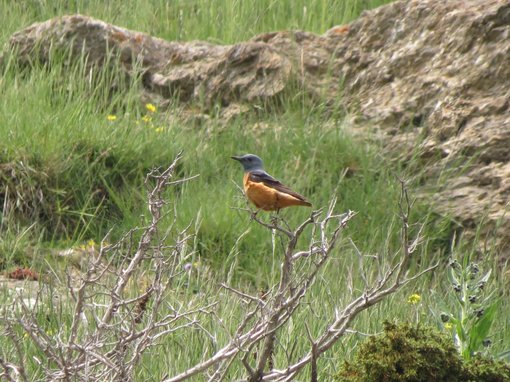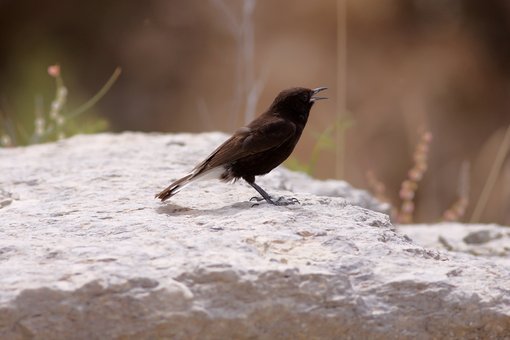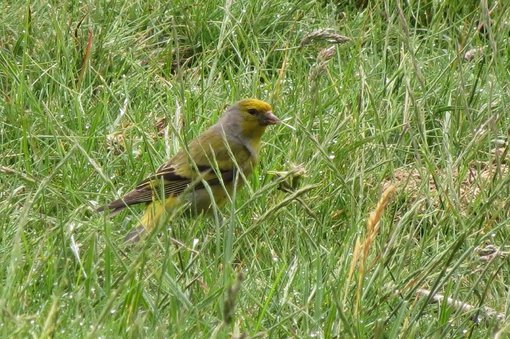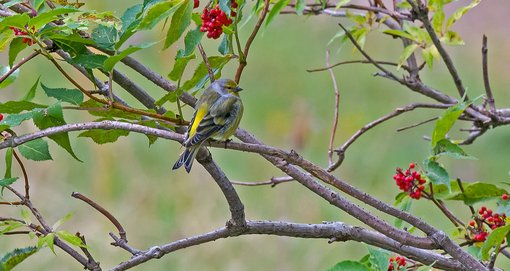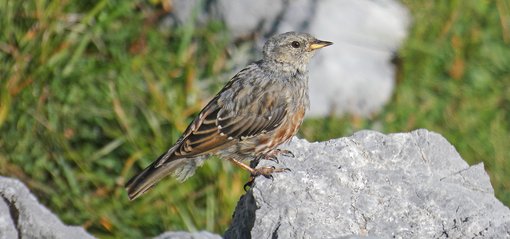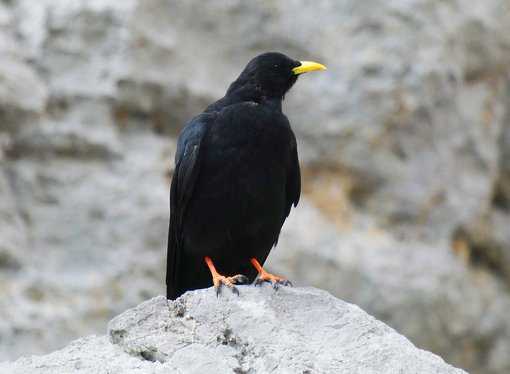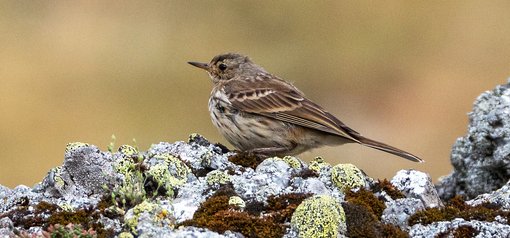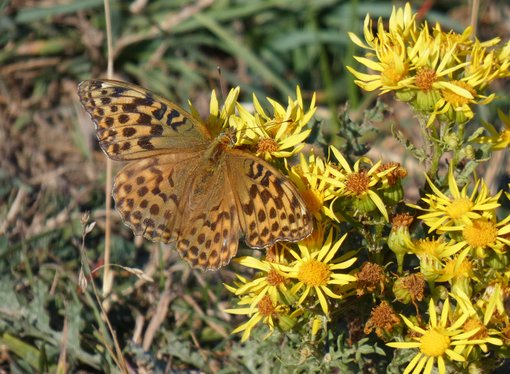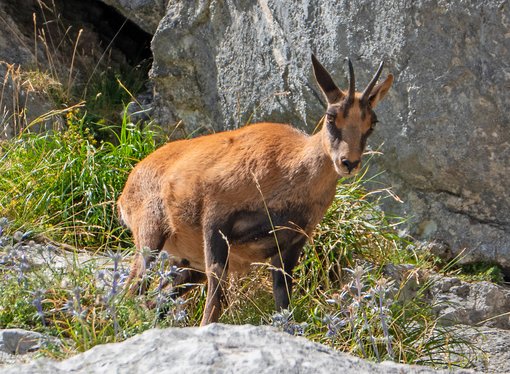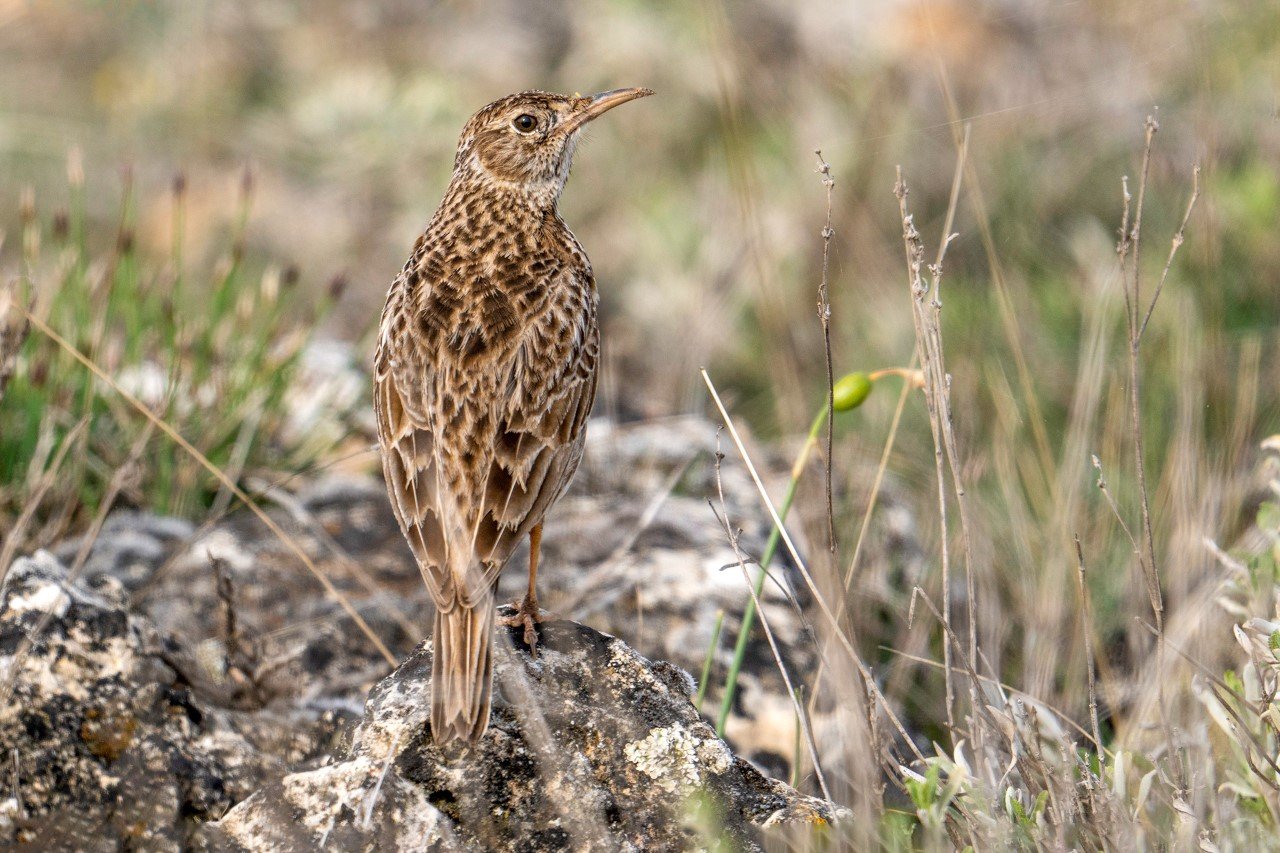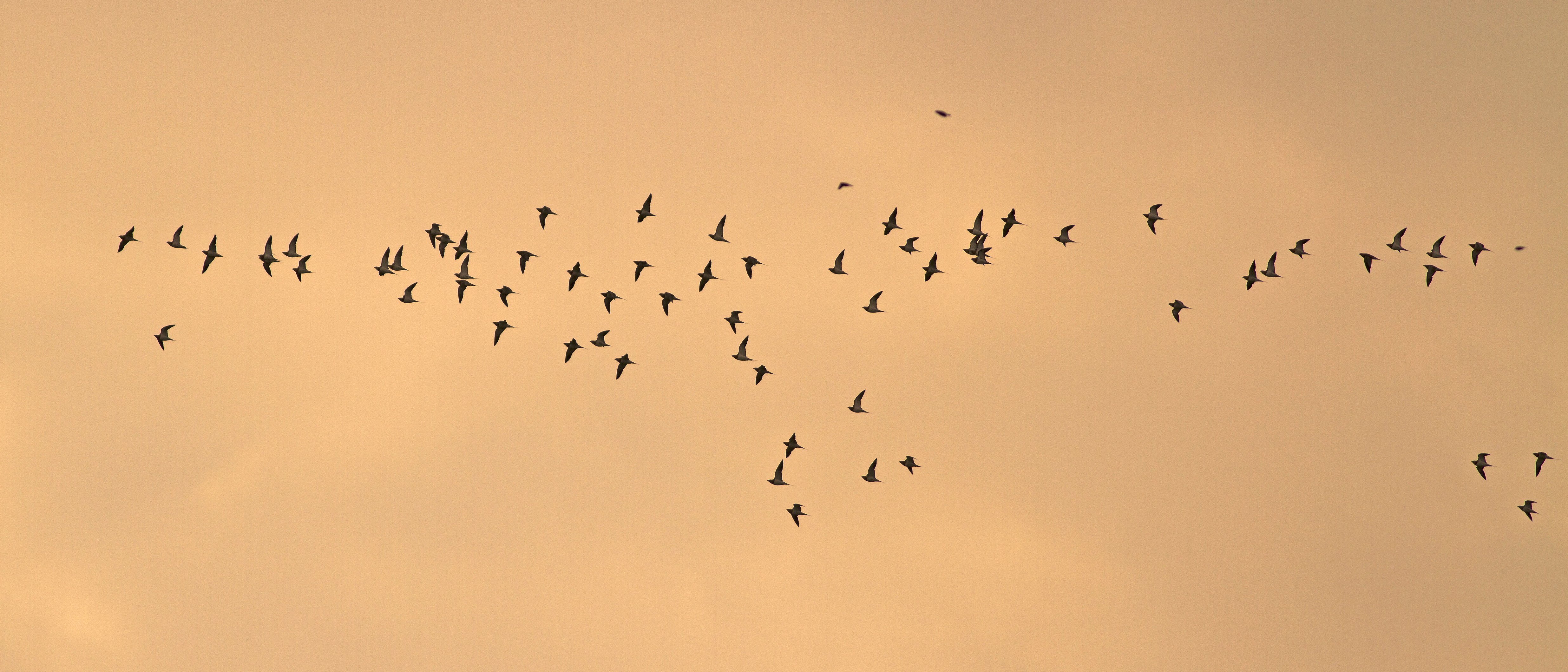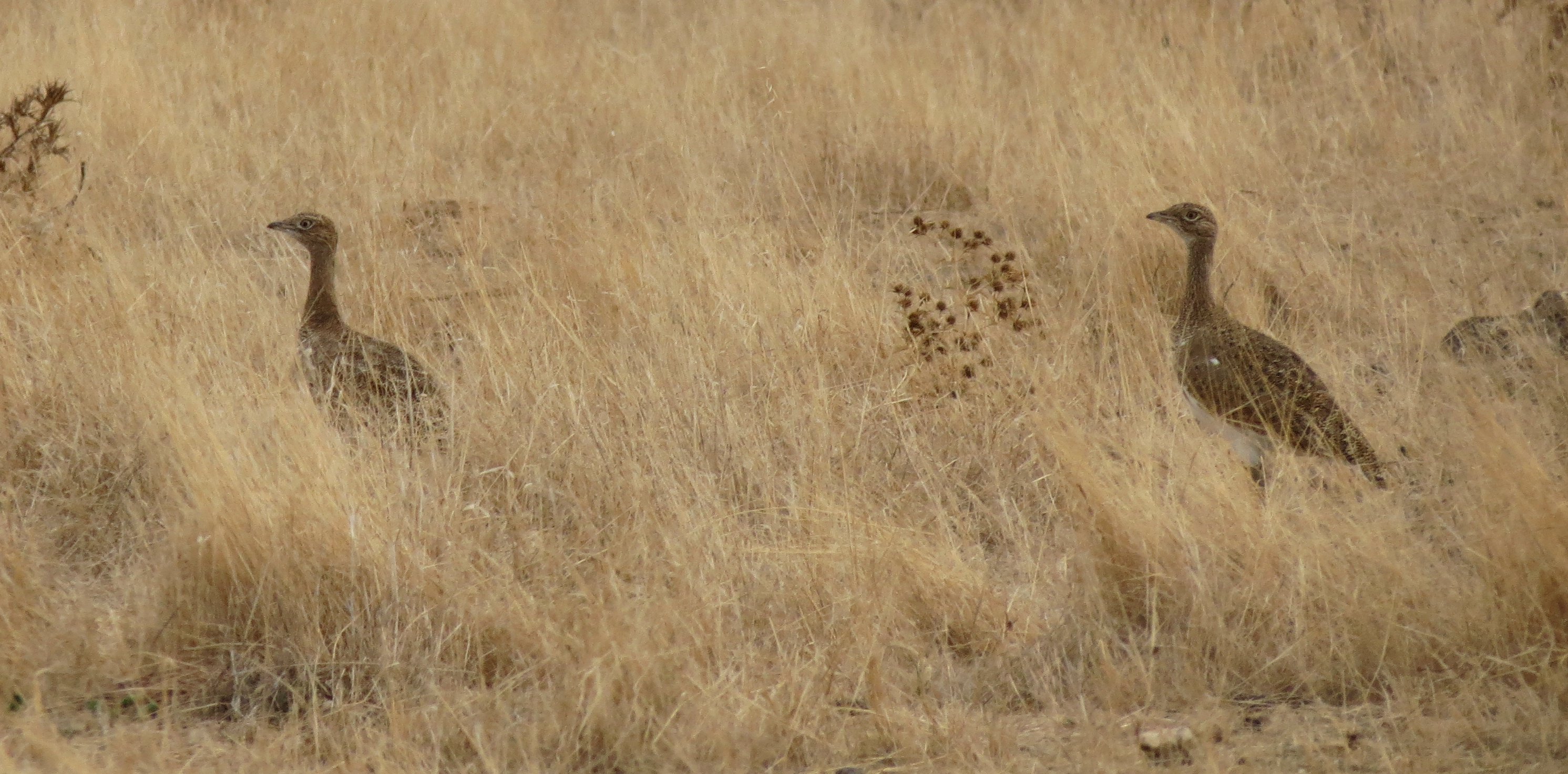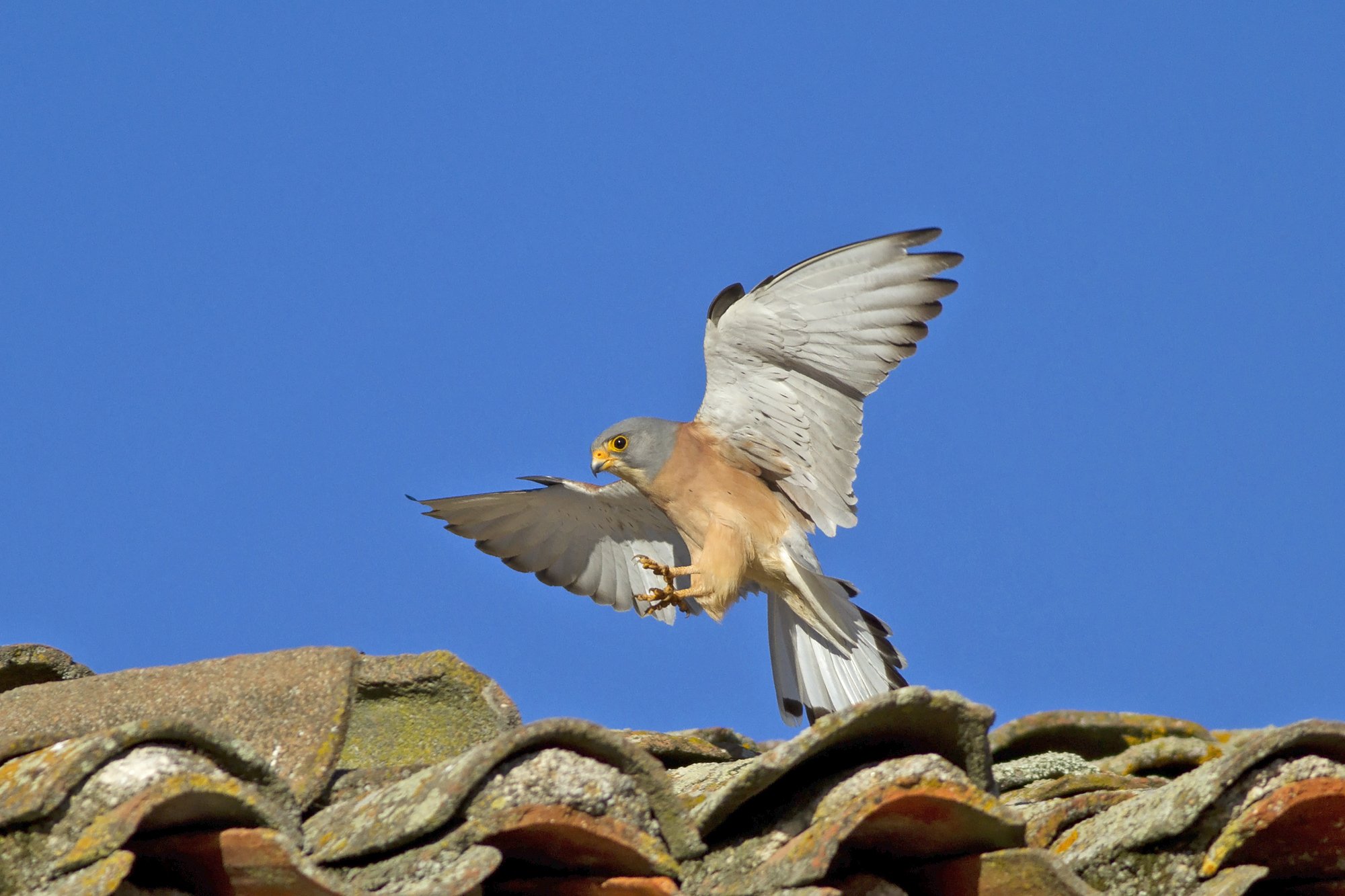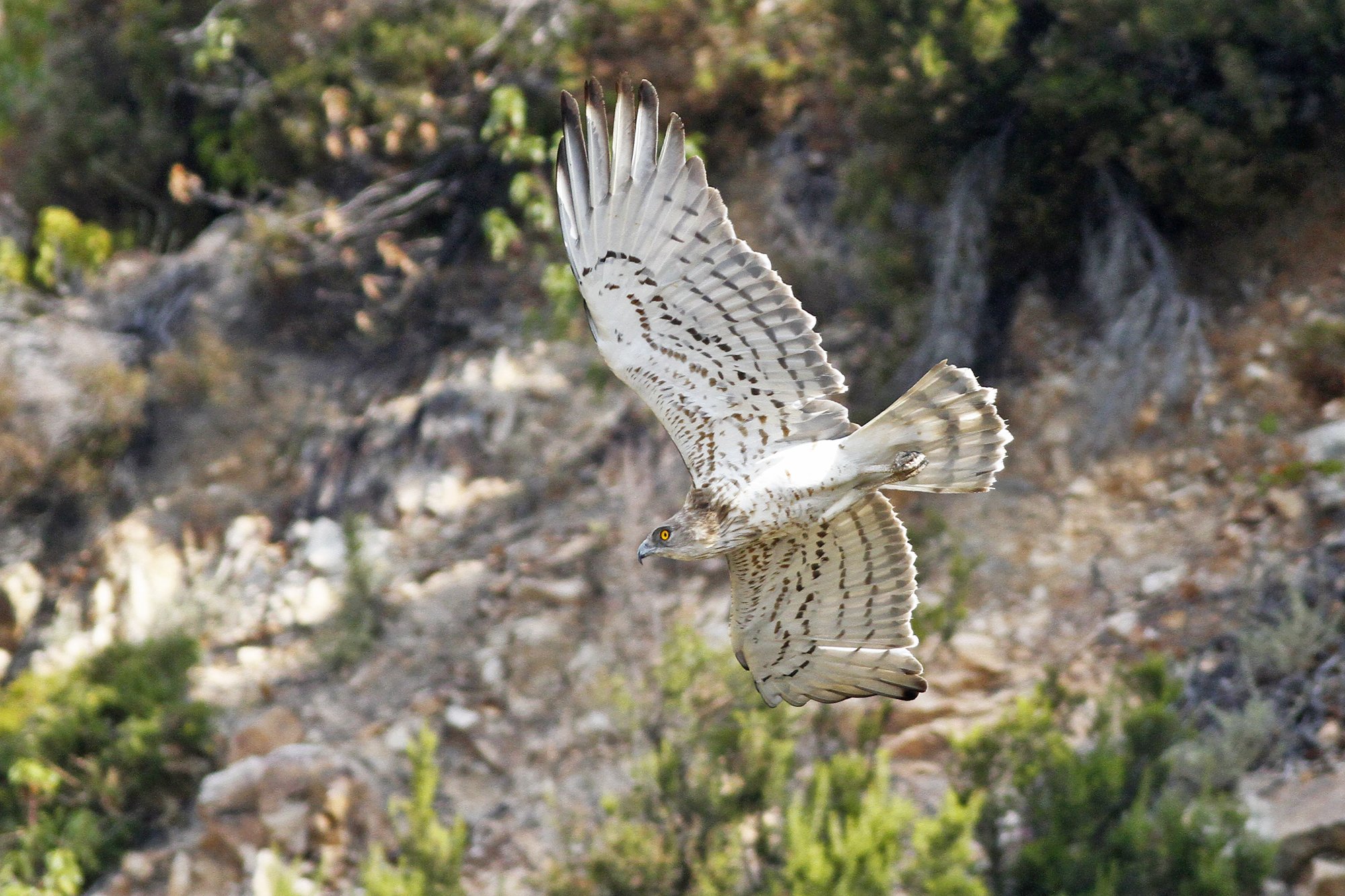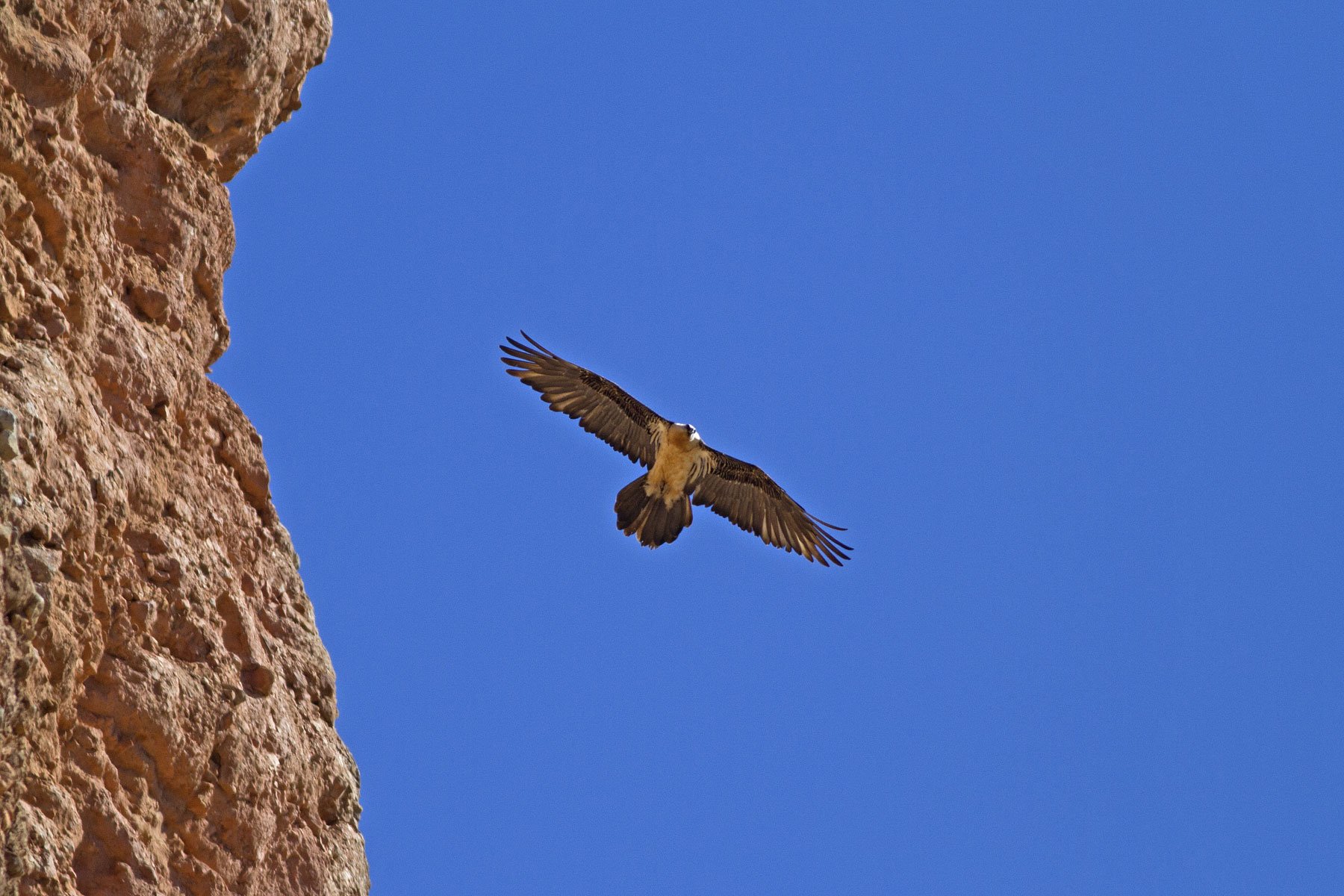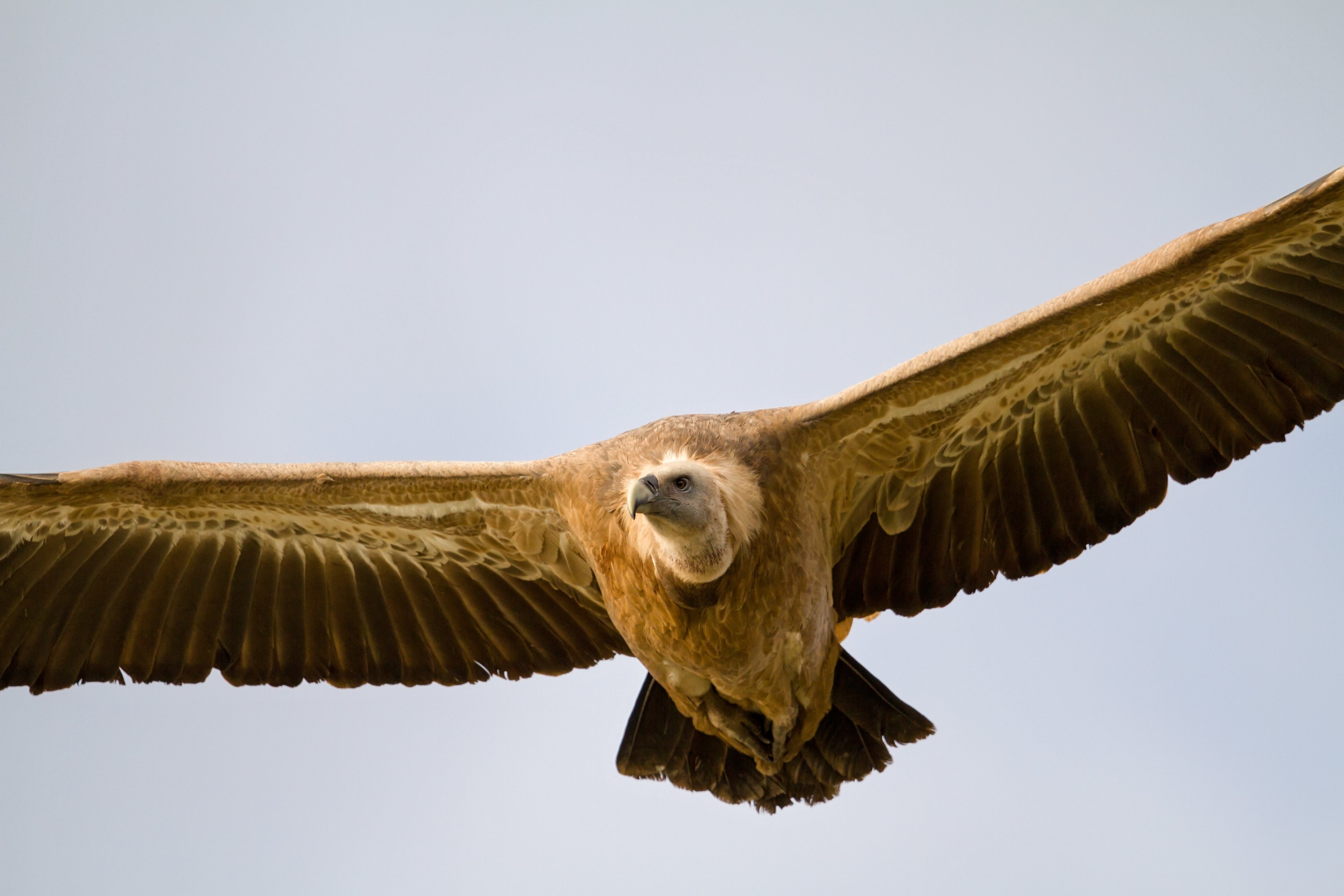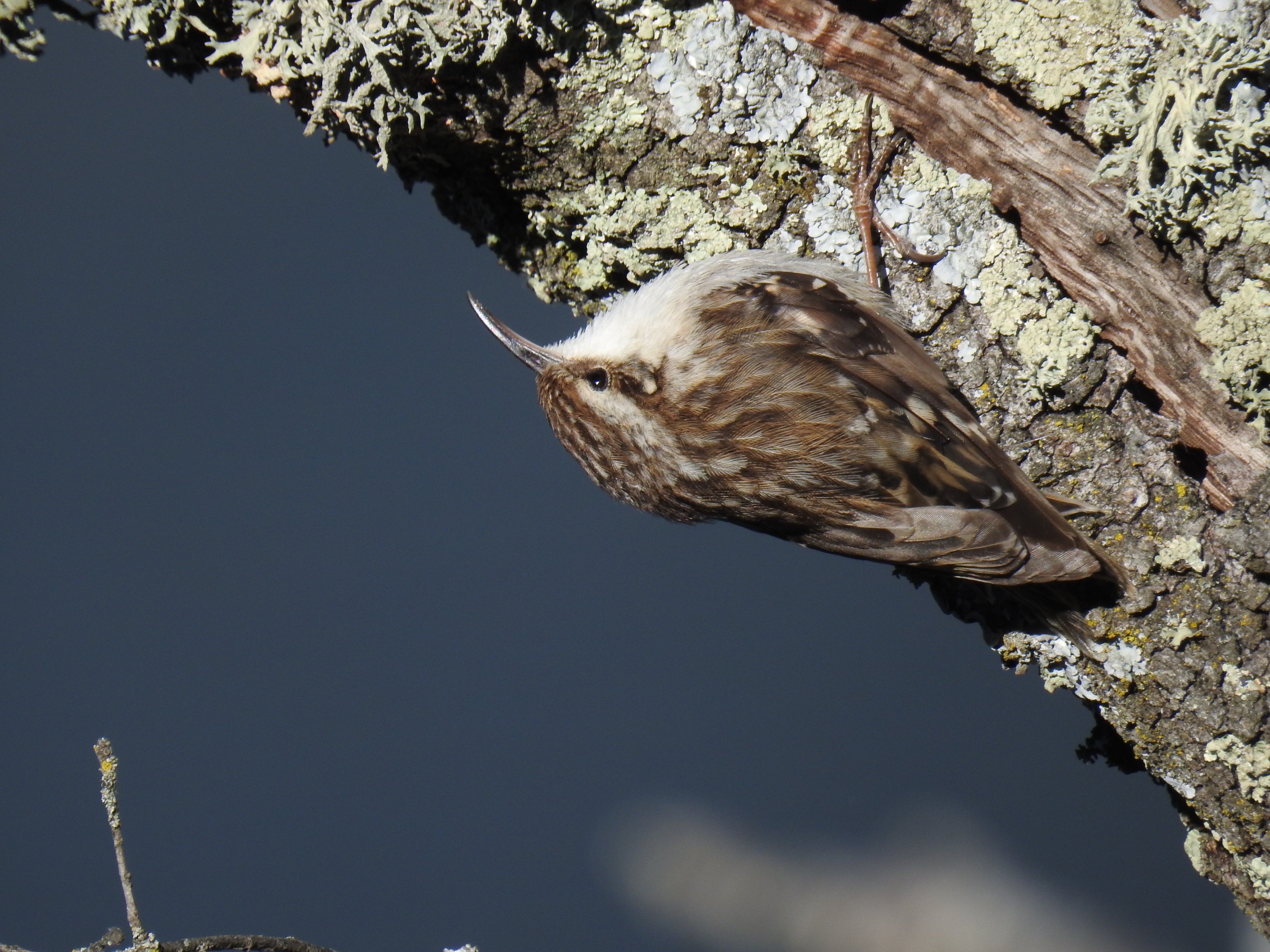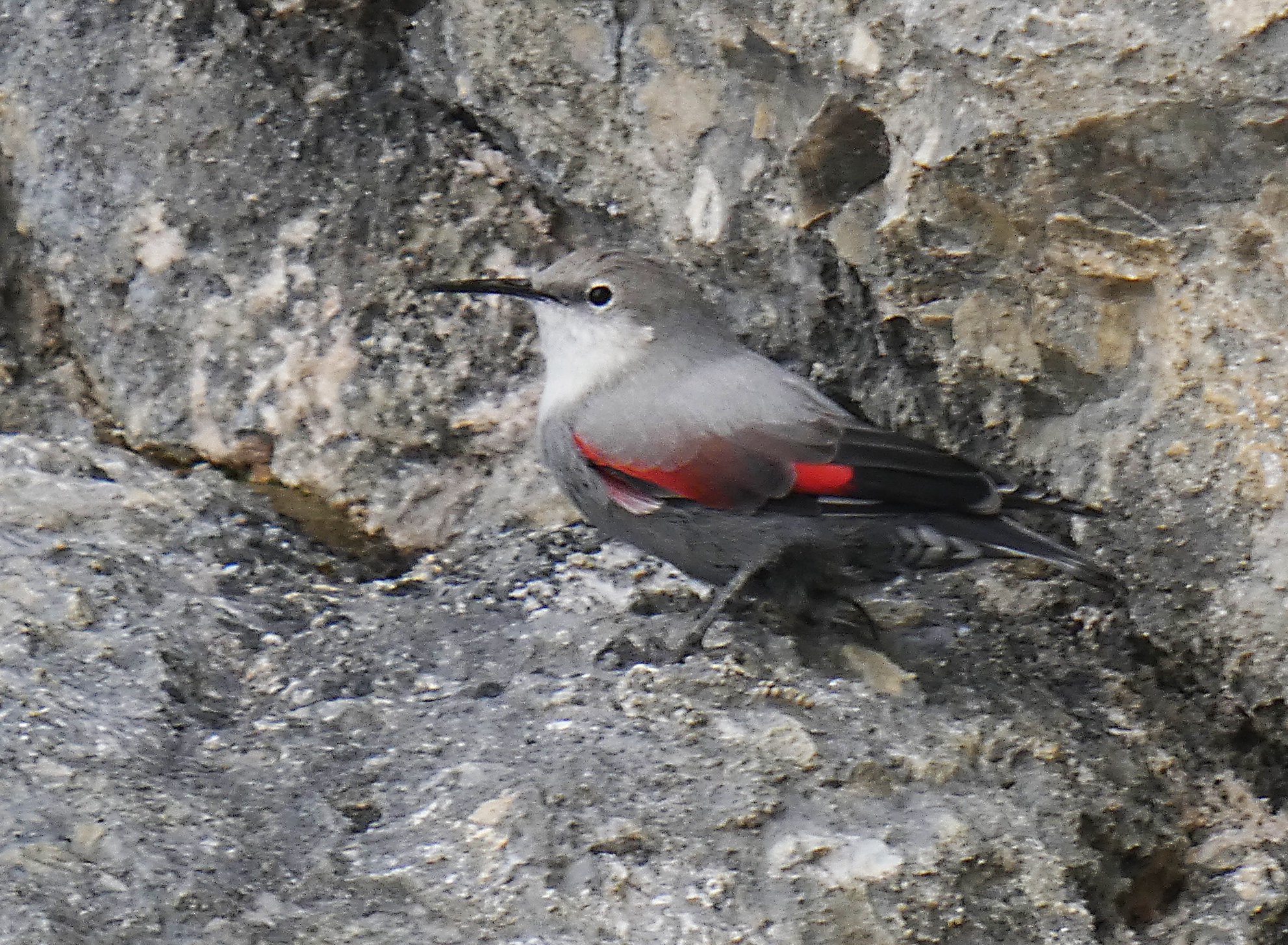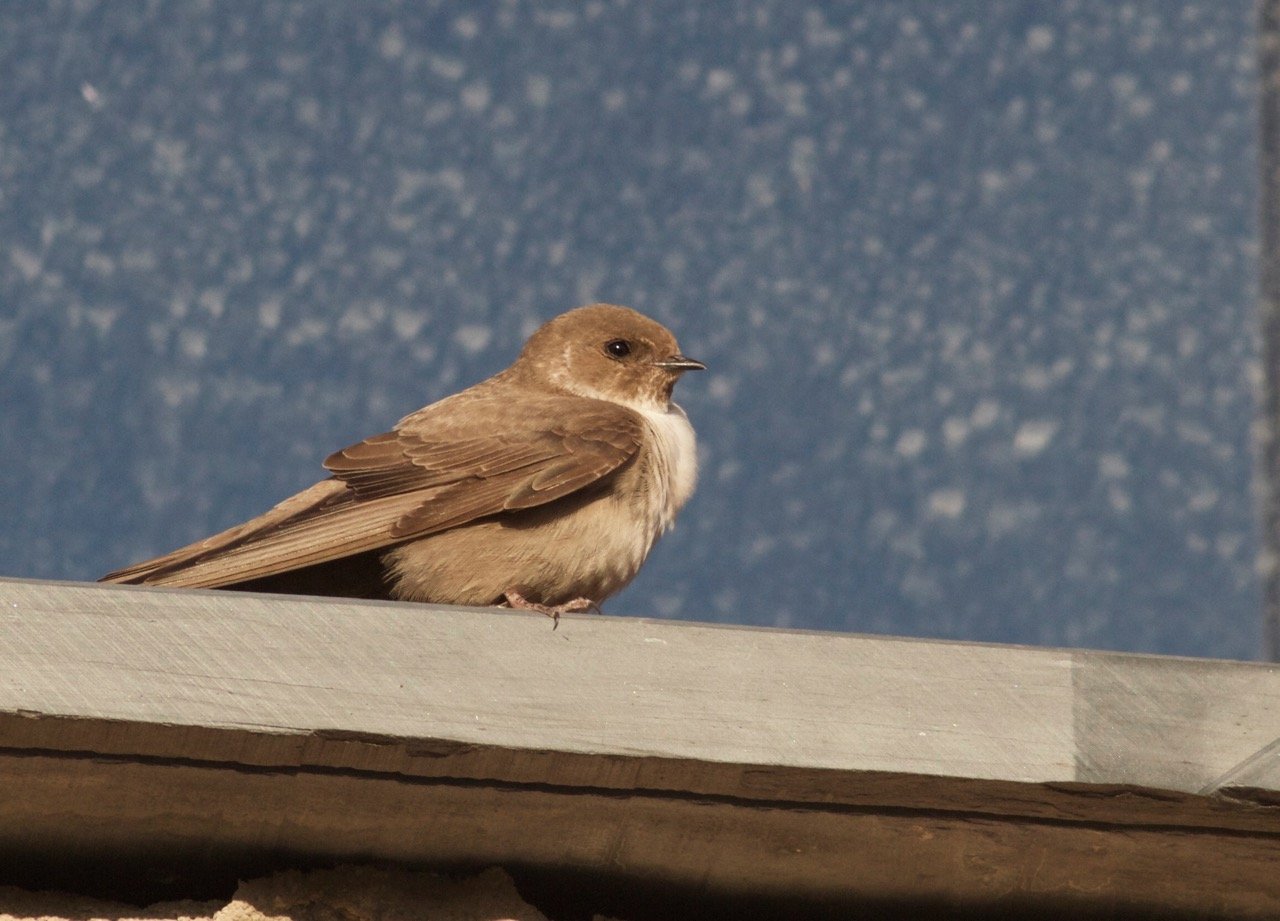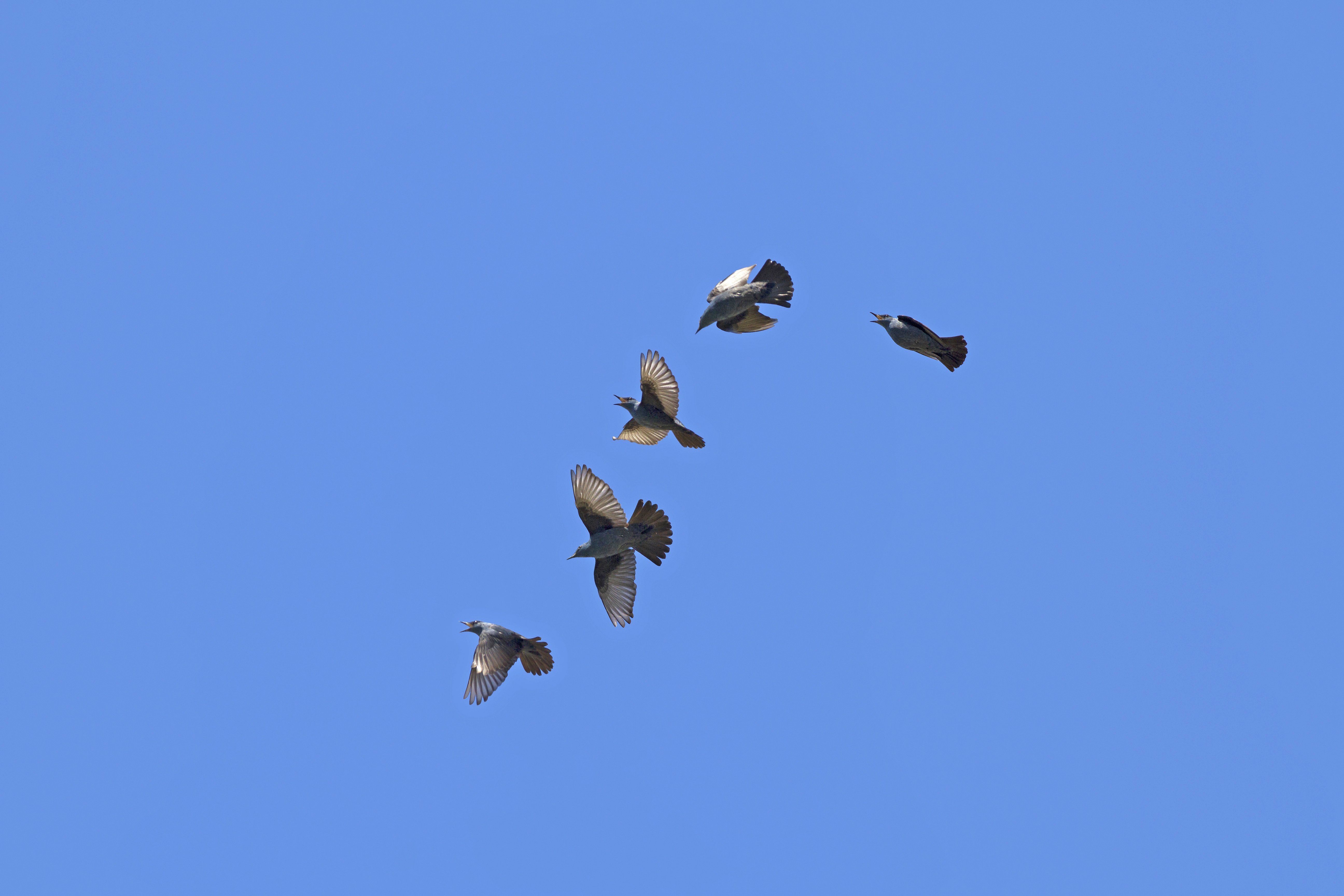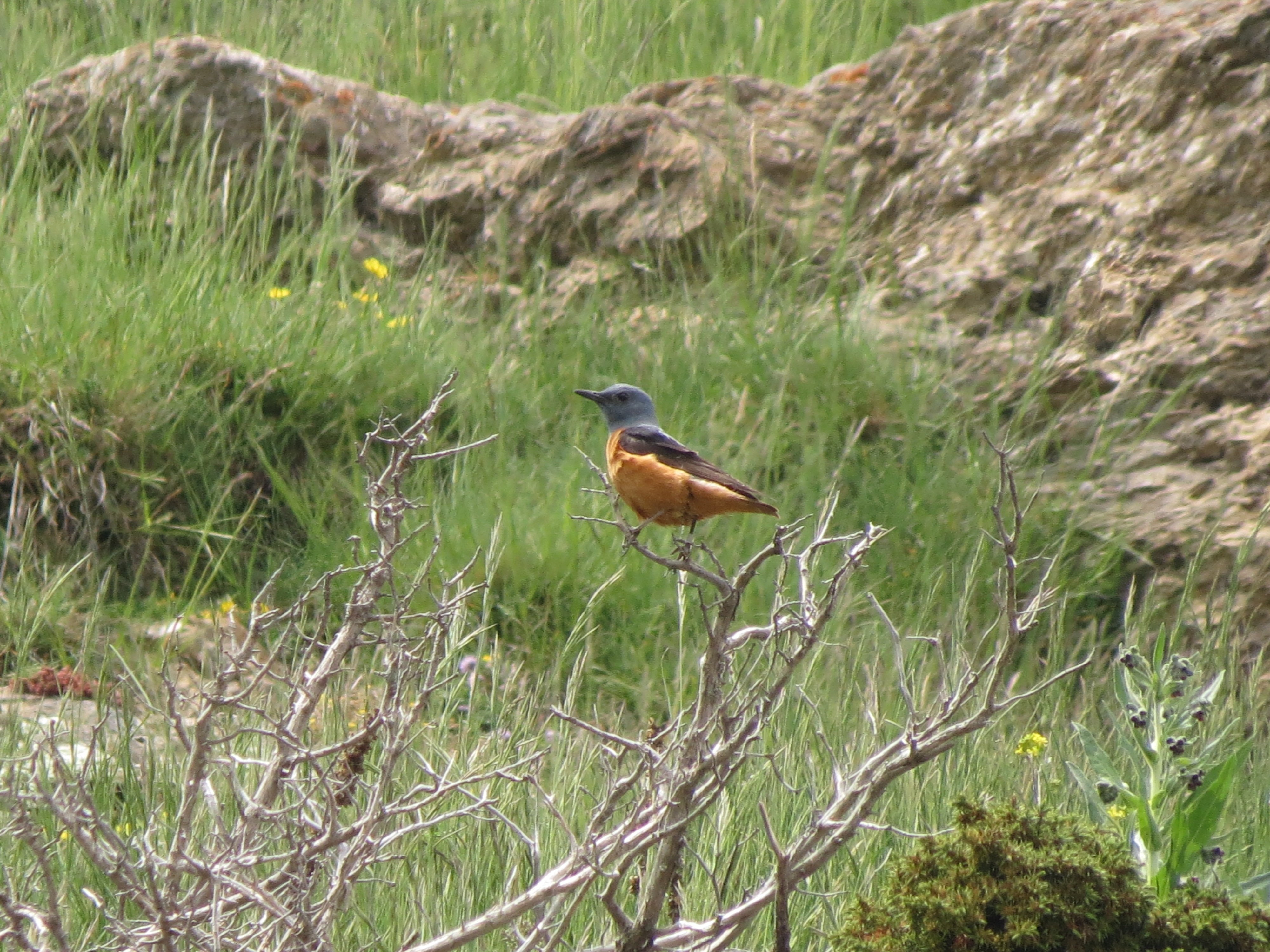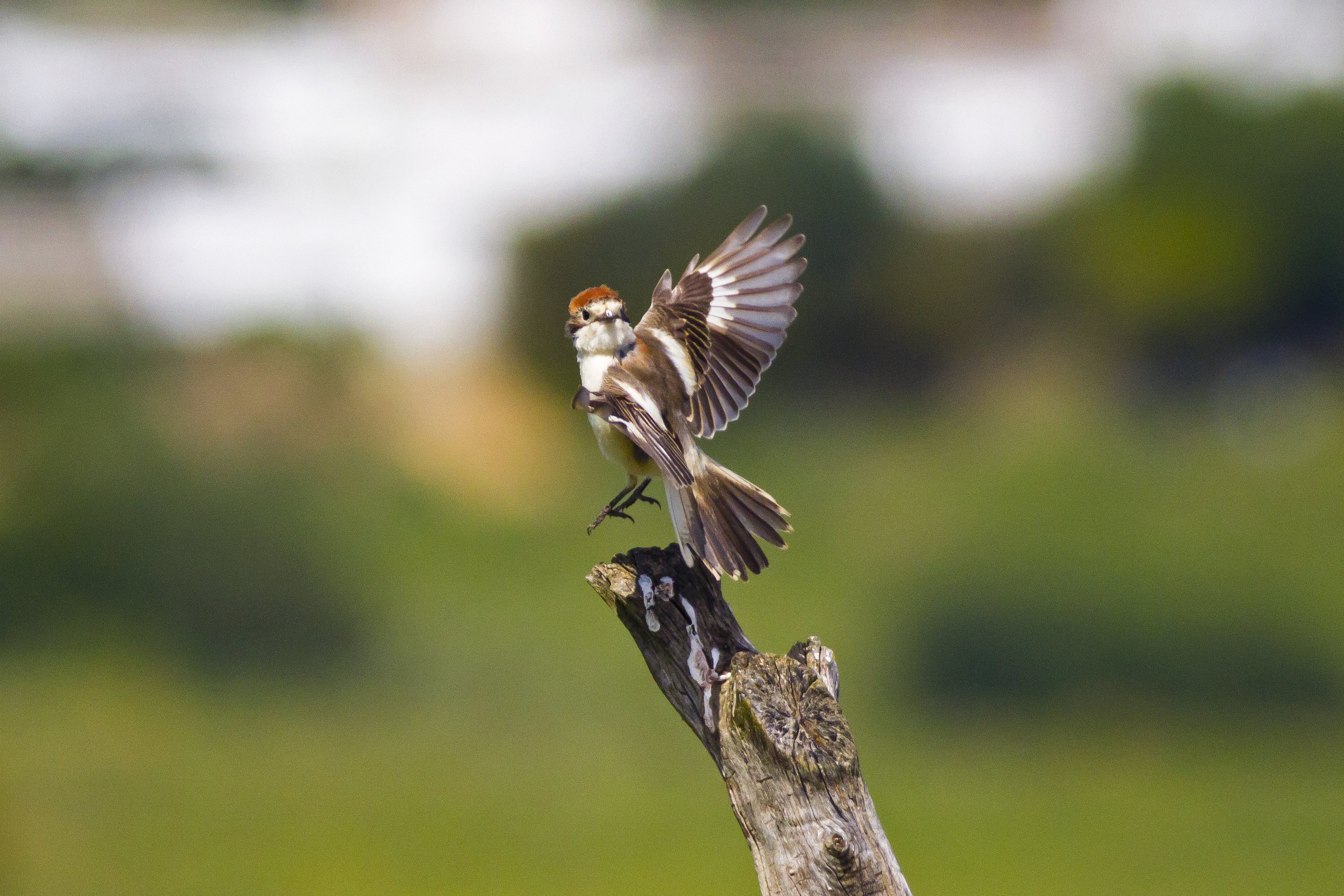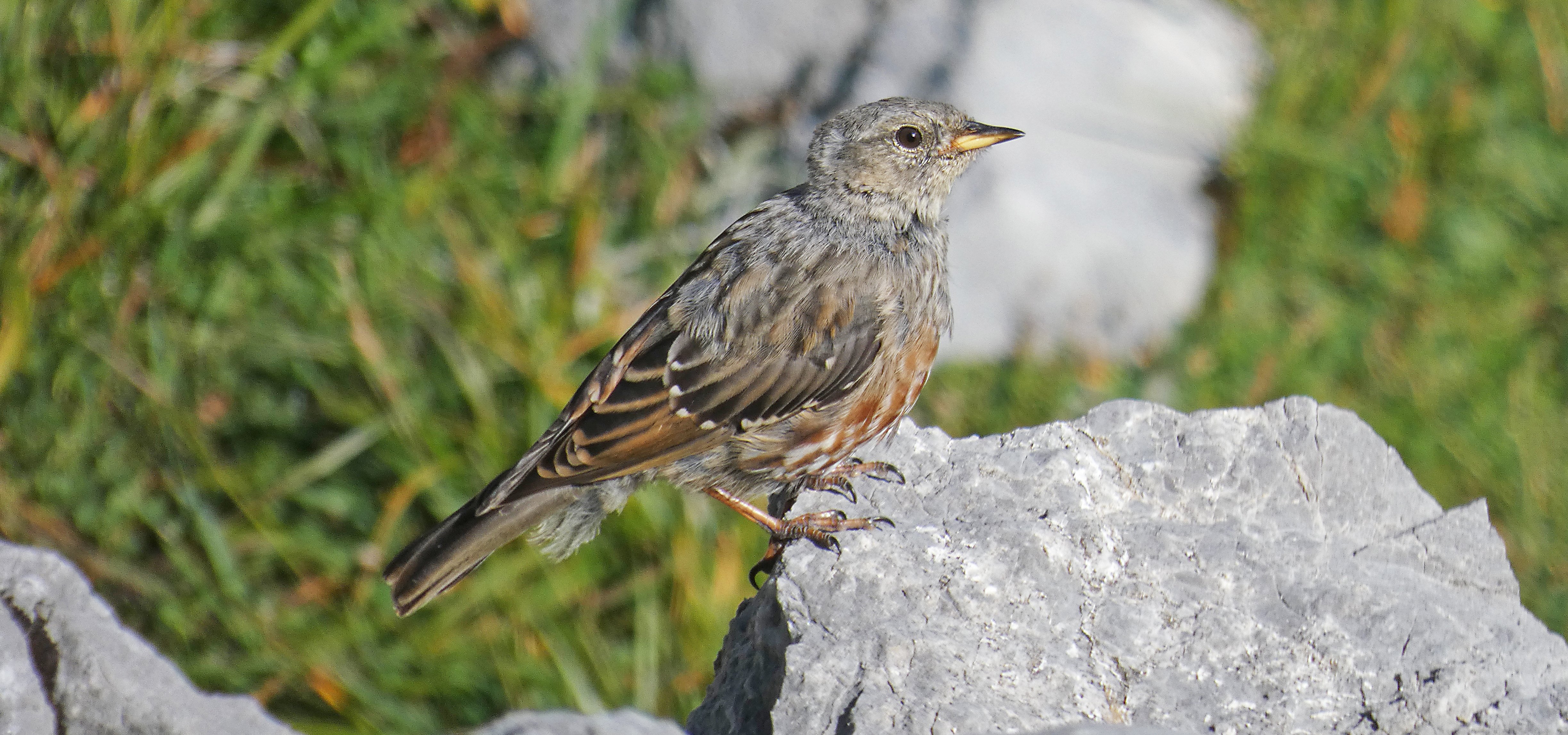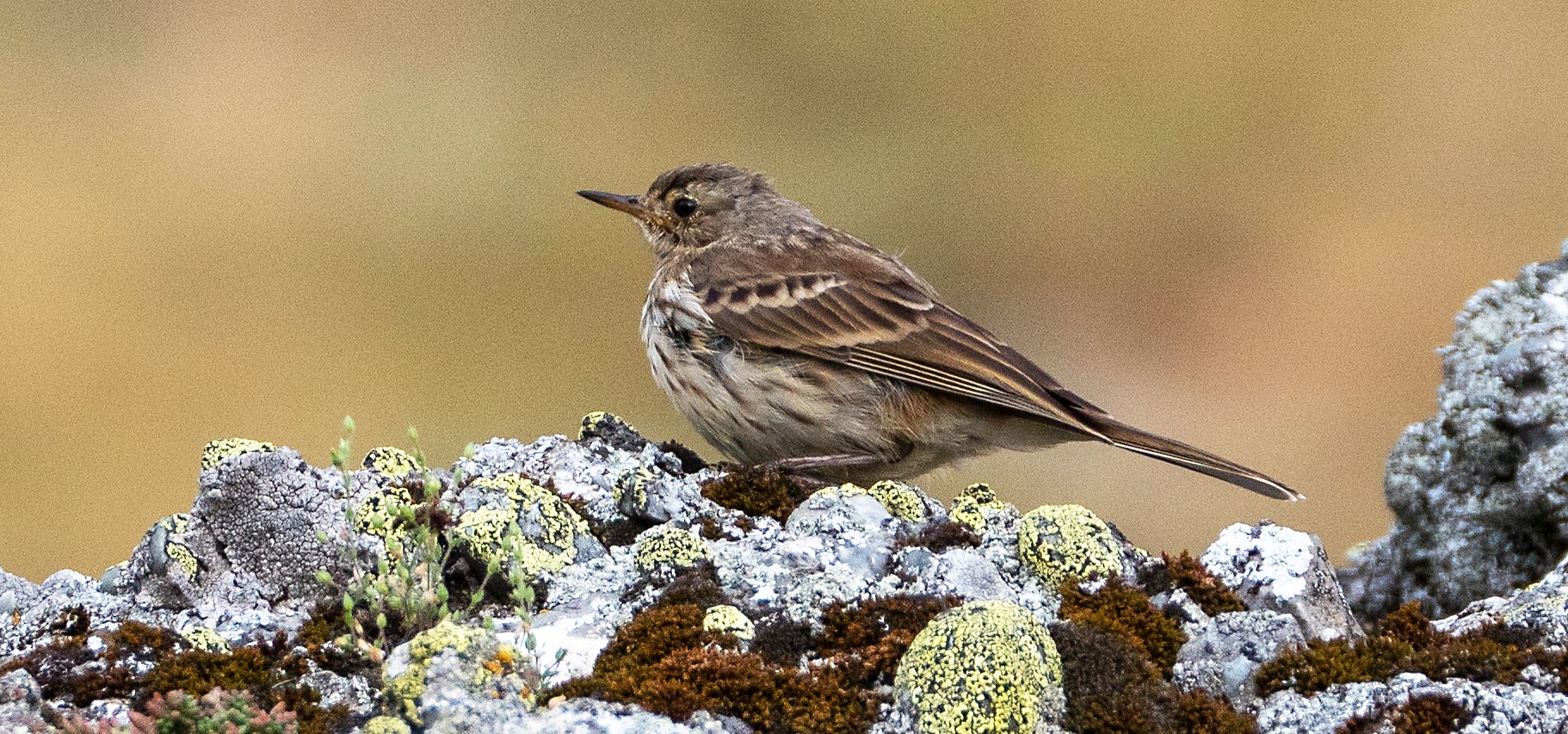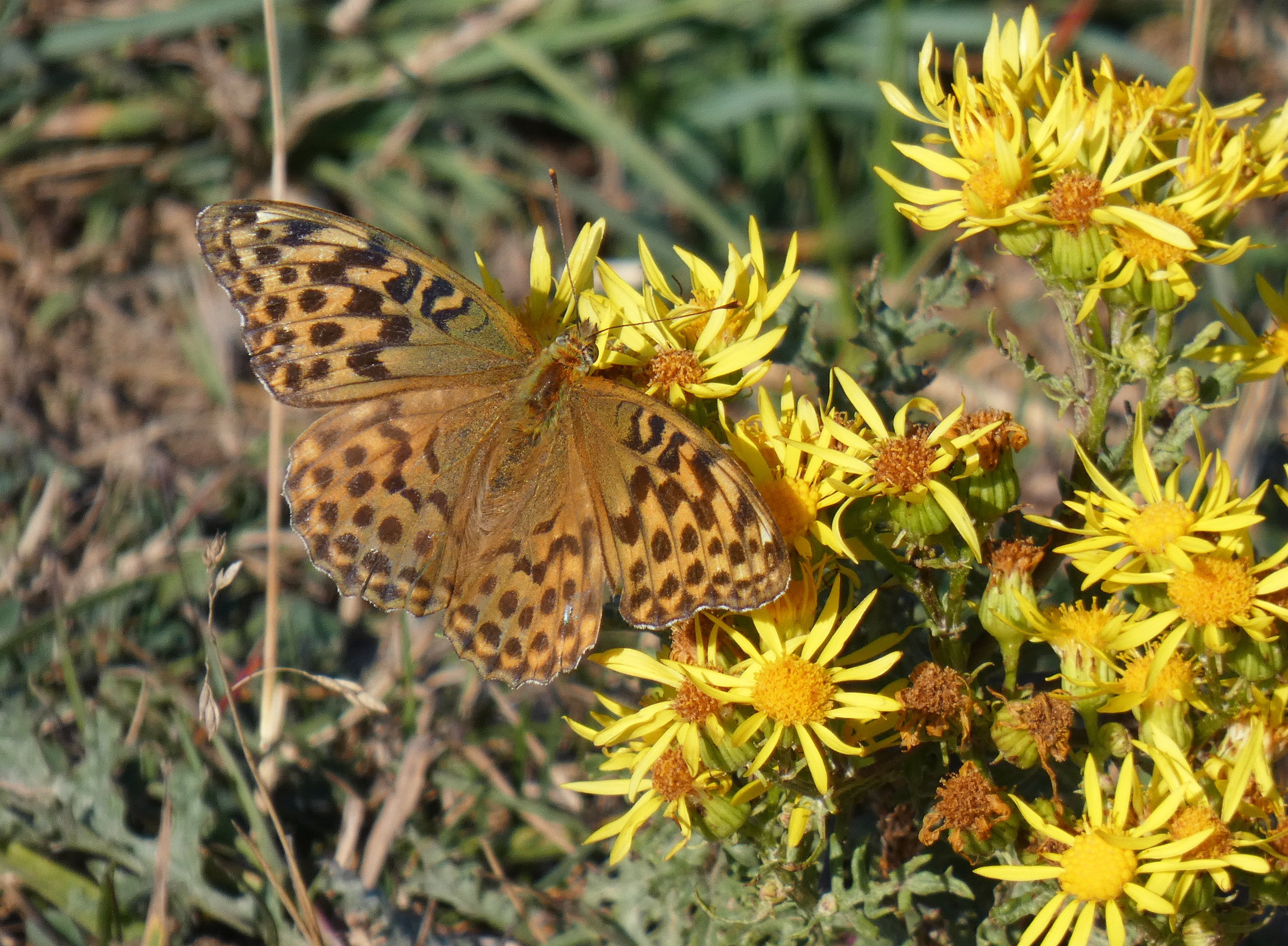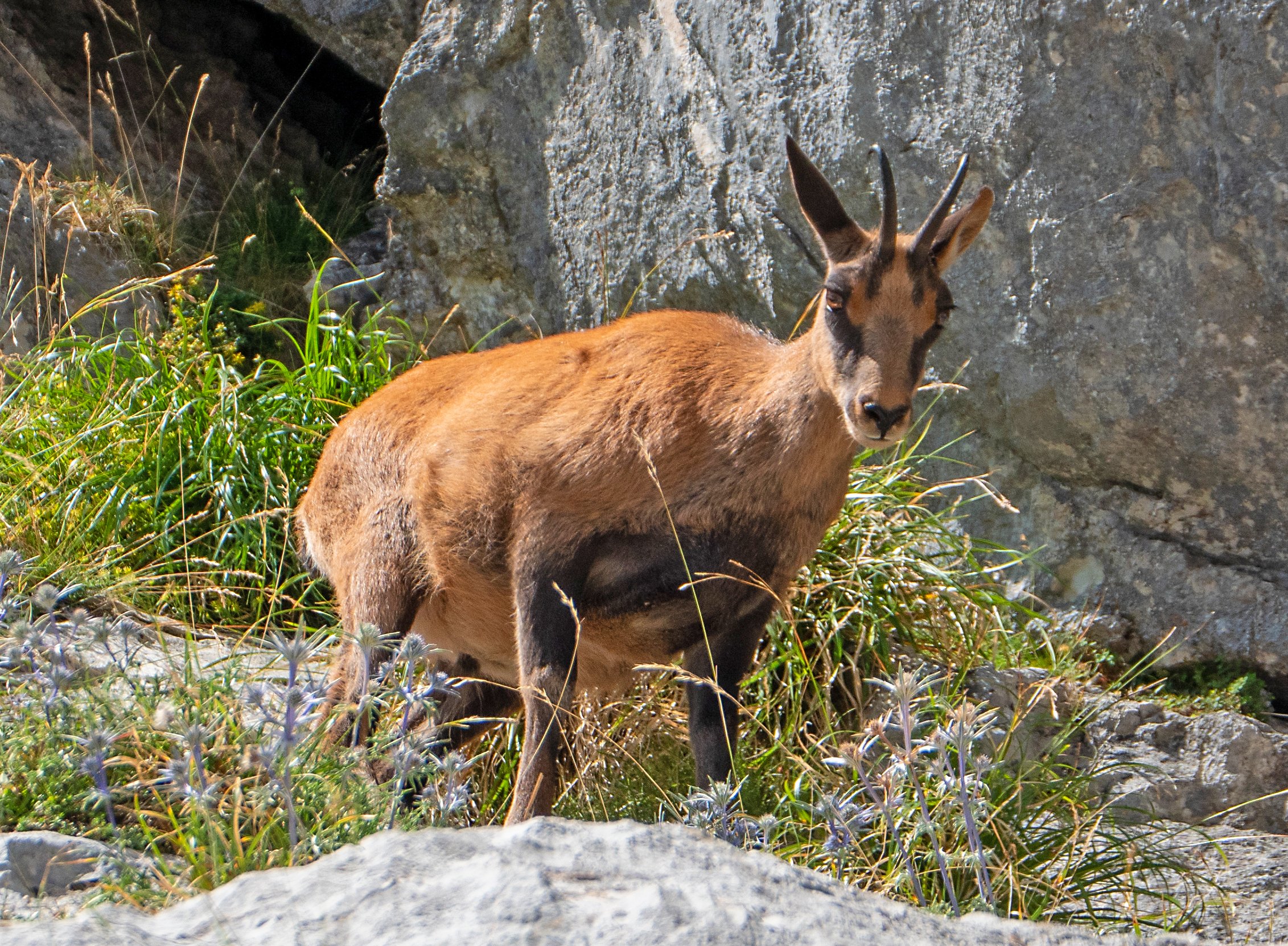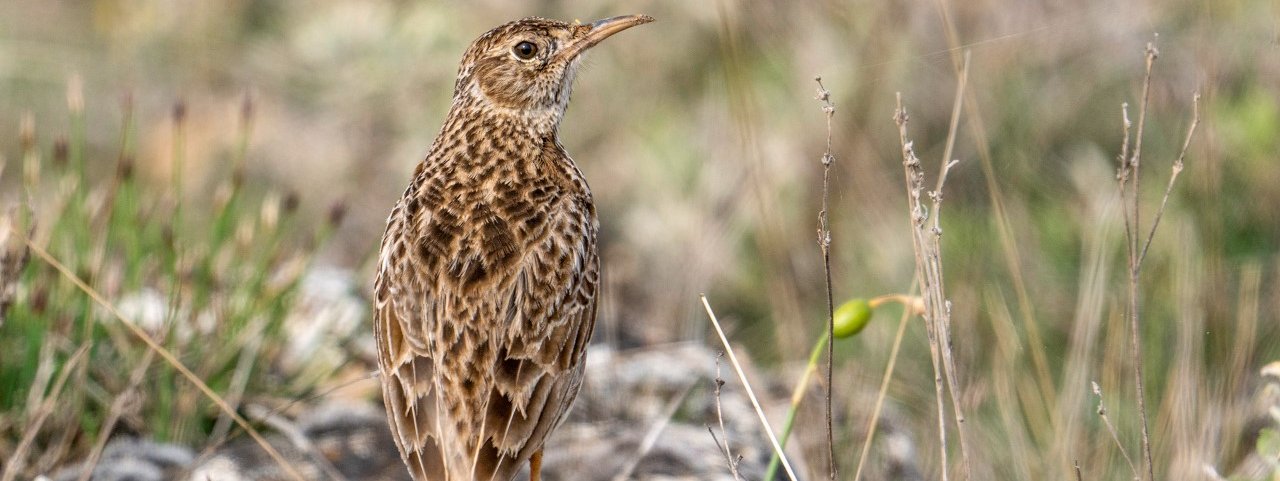Spain
Spanish Steppe and Pyrenees
9-day small group tour in search of Dupont's Lark and steppe and Pyrenean specialities
Limosa’s two centre birding tour to Northern Spain will take you off the tourist track and combines the majesty of the Pyrenees with time a little to south exploring the dry steppes where many special species can be found.
Our tour will start with a three night stay on the steppe where we will look for one of Europe's trickiest birds, Dupont's Lark, as well as a great range of other Spanish specialities including Lesser Kestrel, Little Bustard, Black-bellied and Pin-tailed Sandgrouse and Black Wheatear.
We will then head north to the forests, alpine meadows and high peaks of the Pyrenees where the scenery makes for a truly spectacular backdrop for a wildlife holiday. Here, the birds are very different to further south and we will hope to find sought-after species such as Lammergeier, Wallcreeper and Citril Finch, as well as Egyptian Vulture, Blue Rock Thrush, Rufous-tailed Rock Thrush, Rock Bunting and Rock Sparrow.
There are also many special butterflies to be found including Glandon Blue, Eros Blue, Purple Emperor, Western Brassy Ringlet, Piedmont Ringlet and Dark Green Fritillary and with Limosa's English-speaking Spanish expert Fernando Enrique Navarrete as your guide, we are confident this new itinerary will prove extremely popular.
Tour Dates & Prices
Tour Highlights
- Explore the dry steppes around Belchite for Dupont's Lark and other specialities such as Little Bustard, Black-bellied Sandgrouse and Black Wheatear
- Visit to Laguna de Gallocanta (one of Spain's largest natural lakes) which is a magnet for waterfowl and waders
- Five nights in the Spanish Pyrenees - one of the most scenic places we visit from snow-capped Pyrenean peaks to alpine meadows and the famous towering rock pinnacles of Riglos
- Alpine Swift, Melodious, Western Subalpine and Western Bonelli’s Warblers, Wallcreeper and Citril Finch
- One of the best areas in Europe for birds of prey and vultures with possibilities including Lammergeier, Griffon and Egyptian Vultures, Short-toed, Booted and Golden Eagles
- Up to 75 species of butterflies including Cleopatra, Spanish Fritillary and Spanish Gatekeeper
- Spectacular floral displays - many alpines and orchids
- Small group tour - maximum of 12 participants
- Expertly led by Limosa's all round naturalist guide Fernando Enrique Navarrete with a second leader if the group exceeds seven clients
Outline Itinerary
Flight to Madrid and transfer to Belchite area (3 nights)
Exploring the steppe of Belchite and Laguna de Gallocanta
Morning on steppe. Transfer north to Pyrenees (5 nights)
Exploring the Spanish Pyrenees with possible locations including Hecho, Ansó and Tena Valleys, Los Mallos de Riglos, Sierra de Guara and San Juan de la Peña
Depart for Madrid. Flight to UK
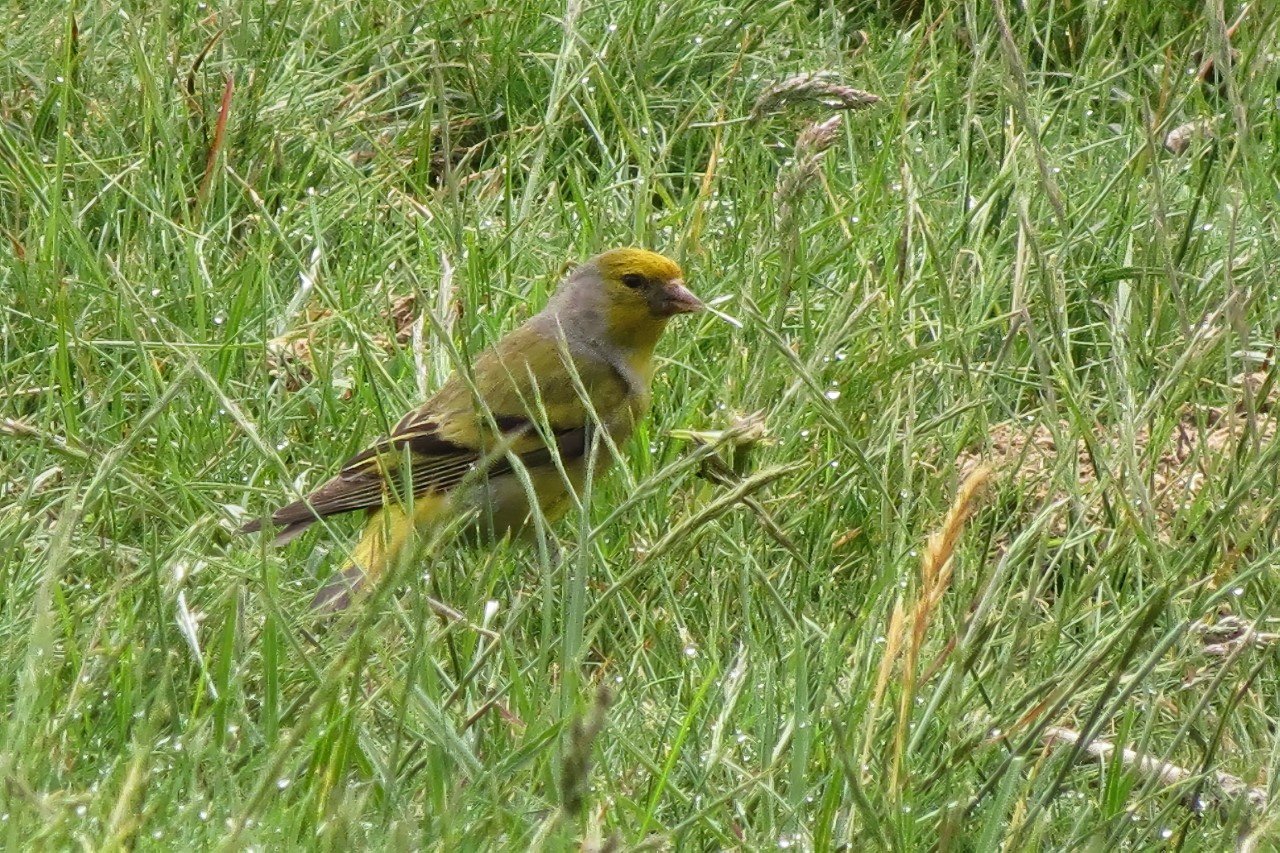
The Ebro Basin of northeast Spain is a unique and spectacular region. Being largely in a rain shadow, it is one of the driest parts of the country and, as a result, is home to some very specialised birds. Heading the list is one of Europe's most sought-after species, the Dupont's Lark, however, there are many other Mediterranean and semi-desert birds to look for and those we hope to see on this new tour include Black and Black-eared Wheatears, Iberian Grey Shrike, Little Bustard, Black-bellied and Pin-tailed Sandgrouse and six other species of larks.
As well as exploring the arid steppe around Belchite (the stronghold for Dupont's Lark), we also plan to visit one of the largest natural lakes in Spain, Laguna de Gallocanta. This acts as a magnet for waterfowl and waders and some of the breeding birds we expect to find include Black-necked Grebe, Black-winged Stilt, Avocet, Kentish Plover, Whiskered Tern and Gull-billed Tern. The surrounding fields are also excellent for special birds and amongst those we plan to look for are Stone Curlew, Calandra Lark, Little Bustard along with a further opportunity for Dupont’s Lark.
After a three-night stay, we will then head north into the Spanish Pyrenees. The scenery here is very different and we can expect to enjoy everything from snow-capped mountains to pine-clad rocky hills, alpine meadows, deciduous wooded valleys and the unusual rocky pinnacles at Riglos.
The area is one of the very best in Europe for birds of prey and vultures: Black and Red Kites, Booted Eagle and Griffon and Egyptian Vultures soar overhead, while Short-toed Eagles hunt the open hillsides for lizards and snakes and Golden Eagles scour the highest peaks. For most birdwatchers, however, one of the major goals of a visit to the Spanish Pyrenees is to see one of the world's more unusual vultures, the extraordinary Lammergeier or Bearded Vulture. This region is one of the best places in Europe to see this threatened species and on many of our previous visits, we have encountered individuals on several occasions during our stay.
For our five-night stay, we will base ourselves at a comfortable hotel north of Jaca and use this as a base to explore the wide variety of habitats in the area. Conveniently located at the hub of the central Spanish Pyrenees, this lies within easy reach of the high mountains to the north, the impressive rock pinnacles of Riglos and the surrounding wooded valleys. Staying here helps to keep our daily travel time to a minimum and over the four full days we have scheduled in the area we can expect to visit the high Pyrenees which are not only home to Lammergeiers and Golden Eagles but also other specialities such as Wallcreeper, Alpine Chough, Rufous-tailed Rock-Thrush and Citril Finch.
On another day, we may explore the famous vertical rock pillars of Riglos which rise up several hundred metres. As well as a nearby Griffon Vulture colony, this site offers some fantastic birding with likely species including Egyptian Vulture, Blue Rock Thrush, Rufous-tailed Rock Thrush, Rock Bunting, Rock Sparrow, Western Subalpine Warbler and the local Black Wheatear.
Another option is a visit to San Juan de la Peña where the flat-topped mountains are best-known for their beautiful scenery and the monastery which is located high in the mountains, but this area is equally worth visiting for its wildlife as the mature pine forests are home to a nice array of forest birds. Here, we will hope to find Black Woodpecker, European Bee-eater, Western Bonelli´s Warbler, Western Subalpine Warbler, Citril Finch, Crossbill, Cirl Bunting and Ortolan Bunting whilst a mix of raptors and vultures soar on the thermals above us.
Whilst birds will be the main focus of our holiday, we will also spend time enjoying the special butterflies of this region with Glandon Blue, Eros Blue, Purple Emperor, Western Brassy Ringlet, Piedmont Ringlet and Dark Green Fritillary amongst the possibilities. The flowers can also be impressive with a good selection of orchids, potentially including the stunning Lady’s Slipper Orchid.
With Limosa's fluent English-speaking all-round wildlife expert Fernando Enrique Navarrete as your guide, this new itinerary offers the opportunity to see a very different range of species to most of our other Spanish holidays.
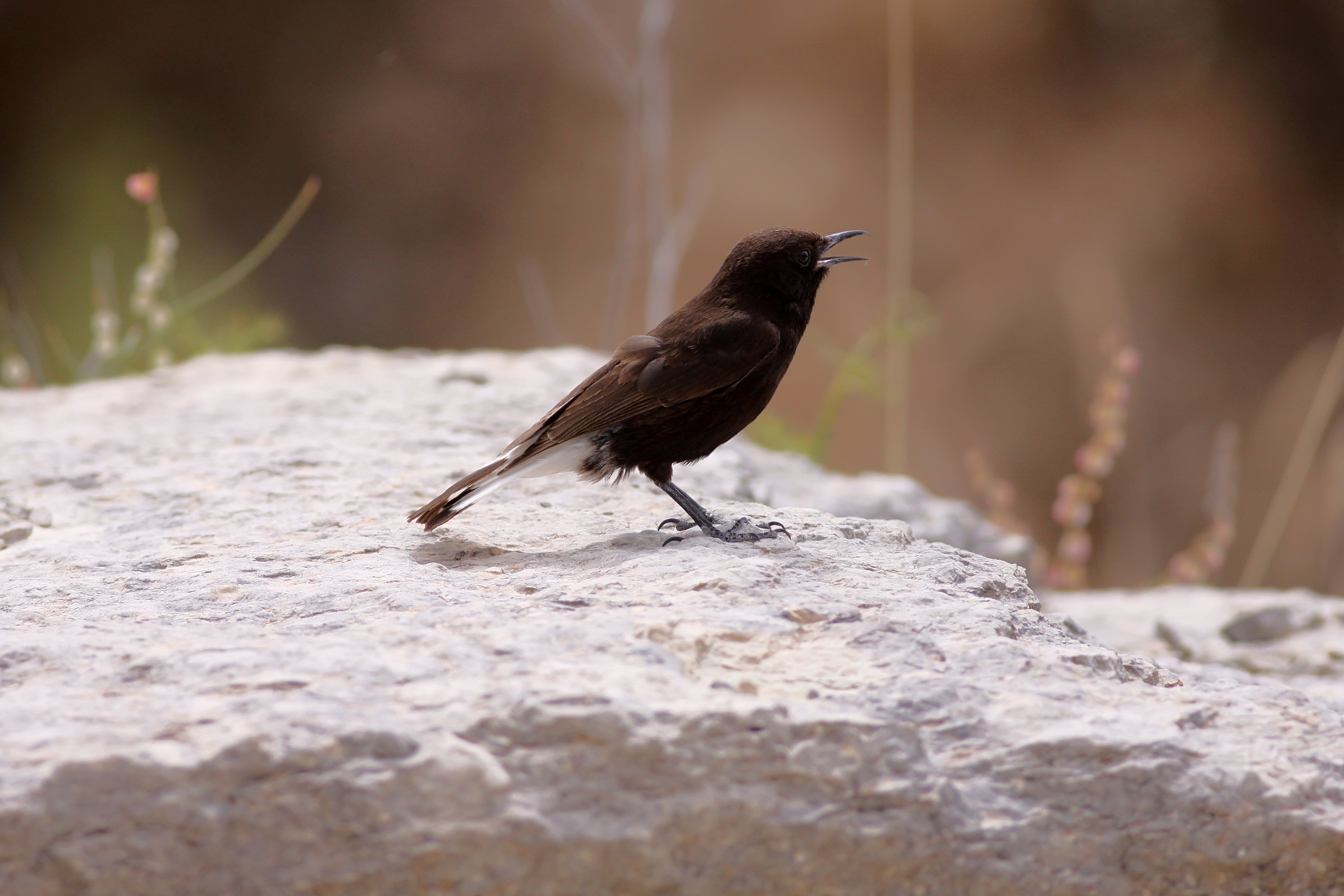
Day 1
FLIGHT TO MADRID AND TRANSFER TO THE STEPPES NEAR BELCHITE
Our summer birdwatching tour to Northern Spain begins with a morning flight to Madrid where Fernando will be waiting for you.
We then transfer north leaving the city behind, gradually climbing onto the arid steppe of Northern Spain. It is a three to four hour journey, but we will pause to enjoy a tapas lunch and for selected birding stops along the way. Our first birds of the holiday could be colourful species such as bee-eaters, rollers and hoopoes, with Montagu’s Harriers floating by across the fields searching for a meal.
We plan to arrive at our comfortable hotel near Belchite in the late afternoon which will be our base for the next three nights. Night near Belchite
Days 2 - 3
EXPLORING THE STEPPE AROUND BELCHITE AND VISIT TO LAGUNA DE GALLOCANTA
The arid lands around Belchite is the most intact area of steppe in this part of Spain and it is rightly famous for its birdlife. Whilst there are many great birds to look for, there is, however, one species which brings birdwatchers to this area and that is the rare and localised Dupont’s Lark.
Whilst this region is considered to have the highest population of this special bird in Spain, nevertheless, seeing it remains a challenge, especially as it typically sings before dawn and then stops singing for the rest of the day. To maximise our chances of success, we will, therefore, have to make a very early start to be on site before sunrise.
With three mornings potentially available, we hope to find this special bird but there are plenty of other species to look for with Lesser Kestrel, Black-bellied and Pin-tailed Sandgrouse and Black Wheatear all possible. There are also an excellent range of other larks to enjoy from the chunky Calandra to Lesser Short-toed and Thekla.
During our stay, we also plan to visit Laguna de Gallocanta which is one of Spain’s largest natural lakes. In the autumn, this site is known for the incredible number of Cranes that migrate from their northern breeding grounds, however, at the time of year when we will be visiting, the lake acts as a magnet for waterfowl and waders.
Some of the breeding birds we hope to see include Black-necked Grebe, Black-winged Stilt, Avocet, Kentish Plover, Whiskered Tern and Gull-billed Tern, however, we will also want to check the surrounding fields as these are home to Stone Curlew, Calandra Lark and small numbers of Little Bustard. Dupont’s Lark is also known from here too so we will continue our quest if we have not yet found this species. Two further nights near Belchite
Day 4
EARLY MORNING ON THE STEPPE AND TRANSFER TO PYRENEES
We will have a last early morning opportunity to explore the steppe around Belchite before we head north for the mountains, alpine meadows, valleys and wooded slopes of the Pyrenees.
It should only take a couple of hours before we start to gain elevation and as we do so, the habitat starts to change dramatically as do the birds.
Our destination is a comfortable hotel not far from the small town of Jaca, where we stay for five nights and during the afternoon, we will begin our exploration of this extremely scenic area.
By staying at the centre of the region's birding hotspots, the amount of travelling required each day is cut to a minimum and with no further changes of hotel to worry about, we will also have plenty of time to get to know the area during our stay. Night in the mountains near Jaca
Days 5-8
SPANISH PYRENEES: JACA, RIGLOS AND THE ARAGON PLAIN
As with any tour to mountain regions, our daily itinerary will remain flexible to allow for the vagaries of the weather but we will aim to visit the full range of Pyrenean habitats to get the best from our stay in this very special area.
On at least one day, we plan to head high where our main quarry will be the Bearded Vulture or Lammergeier (the latter being a Dutch word meaning ‘bone crusher’) which scours the slopes for carcasses of sheep and the endemic Pyrenean Chamois. With their enormous wingspan and long diamond-shaped tail, these huge birds are magnificent to behold.
Although once much more widespread, numbers are now slowly increasing again and on a previous tours to the Spanish Pyrenees, we have seen individuals on several occasions during our stay, however, we would count ourselves extremely fortunate if we were to witness their unique behaviour of dropping bones from a great height to get at the marrow.
Another high-altitude specialist is the delightful Citril Finch, a bird which is only found in the mountain regions of southern Europe and we may also see flocks of Alpine Chough wheeling around in the sky above us whilst Crag Martins hawk for insects.
On some previous visits, we have enjoyed stunning views of the remarkable Wallcreeper and we will hope for further success, however, climate change does seem to be affecting this bird, which appears to be retreating from many of its former haunts across the Pyrenees and the Alps to breed at higher and thus less accessible elevations. Whilst success with this species can most definitely not be guaranteed, over the years our tours have had a good record of finding this special bird.
On another day, we are likely to head for the Tena Valley which stretches from open fields and Mediterranean evergreen woodlands in the lowlands to beech-fir forests, subalpine heathlands and finally alpine meadows at higher elevations.
Unlike some other valleys in the area, this one is well developed allowing easy access. The alpine pastures and hay meadows are amongst the best area to look for the butterflies and flowers and as well as hopefully finding Lady's Slipper Orchid, we may also see Elder-flowered and Broad-leaved Marsh Orchids, Dragonmouth, Narcissus-flowered Anemone, White Pasque Flower, Birdseye Primrose and Pyrenean Kidney-vetch
We will also keep any eye for some of the special butterflies of the area with the possibilities including Glandon Blue, Eros Blue, Purple Emperor, Western Brassy Ringlet, Piedmont Ringlet and Dark Green Fritillary.
There are, of course, also plenty of birds to look for with Rufous-tailed Rock Thrush, Dipper, Red-backed Shrike and Ortolan Bunting all fairly common in the area.
We are likely to also visit some of the majestic alpine forests which are dominated by Beech and Silver Fir. Many of the birds here including Marsh Tit, Nuthatch and Bullfinch are typical of those to be seen in the UK, although in Spain this is their main outpost. Firecrests are frequent in these woodlands but we will also hope to find the large and imposing Black Woodpecker possibly locating this substantial bird by its distinctive call or the resonating sound as it hammers a tree.
On some slopes, there are areas of Scots Pine and the warm air is laden with the scent of resin. As if we were in Scotland, we will need to listen out for the distinctive calls of Crested Tits trilling in the treetops. Where there are breaks in the tree cover, we can scan for raptors and vultures with Griffon Vultures seemly ever-present in the skies and we also hope to encounter the declining Egyptian Vulture, along with Short-toed and Booted Eagles, Common Buzzard, Honey Buzzard and maybe even a Goshawk.
At the base of the Pyrenees, the flat alluvial Aragón plain is a patchwork of ripening cornfields interspersed with crumbling ‘bad lands’ of grey marl and the birds are highly characteristic of the Mediterranean region with Hoopoe, Sardinian and Melodious Warblers, Tawny Pipit and Serin all possible. Crested Larks are not uncommon, Black and Red Kites soar overhead and rainbow-hued European Bee-eaters swoop gracefully in search of prey.
Travelling through this lovely countryside, we will most certainly plan to visit the almost surreal, pink sandstone pillars that are the towering Los Mallos de Riglos. The village below these amazing cliffs sits amidst fields that can be swarming with butterflies, while the seemingly barren scree has somehow provided ground for villagers to cultivate orchards of fragrant almonds and olives. With vultures in constant attendance above, it is in this chequerboard landscape that we will search for both Black and Black-eared Wheatears, the furtive Western Orphean Warbler and showy Woodchat Shrike.
This tour can be excellent for butterflies and if the weather is kind we have recorded as many as 75 different species on previous visits to this region. Past tour highlights have included Common and Iberian Swallowtails, Nettle-tree Butterfly, Camberwell Beauty, Spanish Fritillary and Purple Emperor as well as a host of fritillaries, blues and hairstreaks. On the high slopes, slow flying Apollos drift across open, flowery meadows; in sunny woodland glades, Duke of Burgundy and Southern White Admiral enliven our walks, while on flower-filled banks in the foothills, handsome Spanish Gatekeepers, stunning Cleopatras and sublime Black-veined Whites may vie for our attention. Four further nights in the mountains near Jaca
Day 9
RETURN TO MADRID, FLY LONDON
We should have time for some final early morning birding before reluctantly making our way back down to Madrid.
Late afternoon check-in for our return flight from Madrid to the UK, where our summer tour to the Spanish Steppe and Pyrenees concludes.
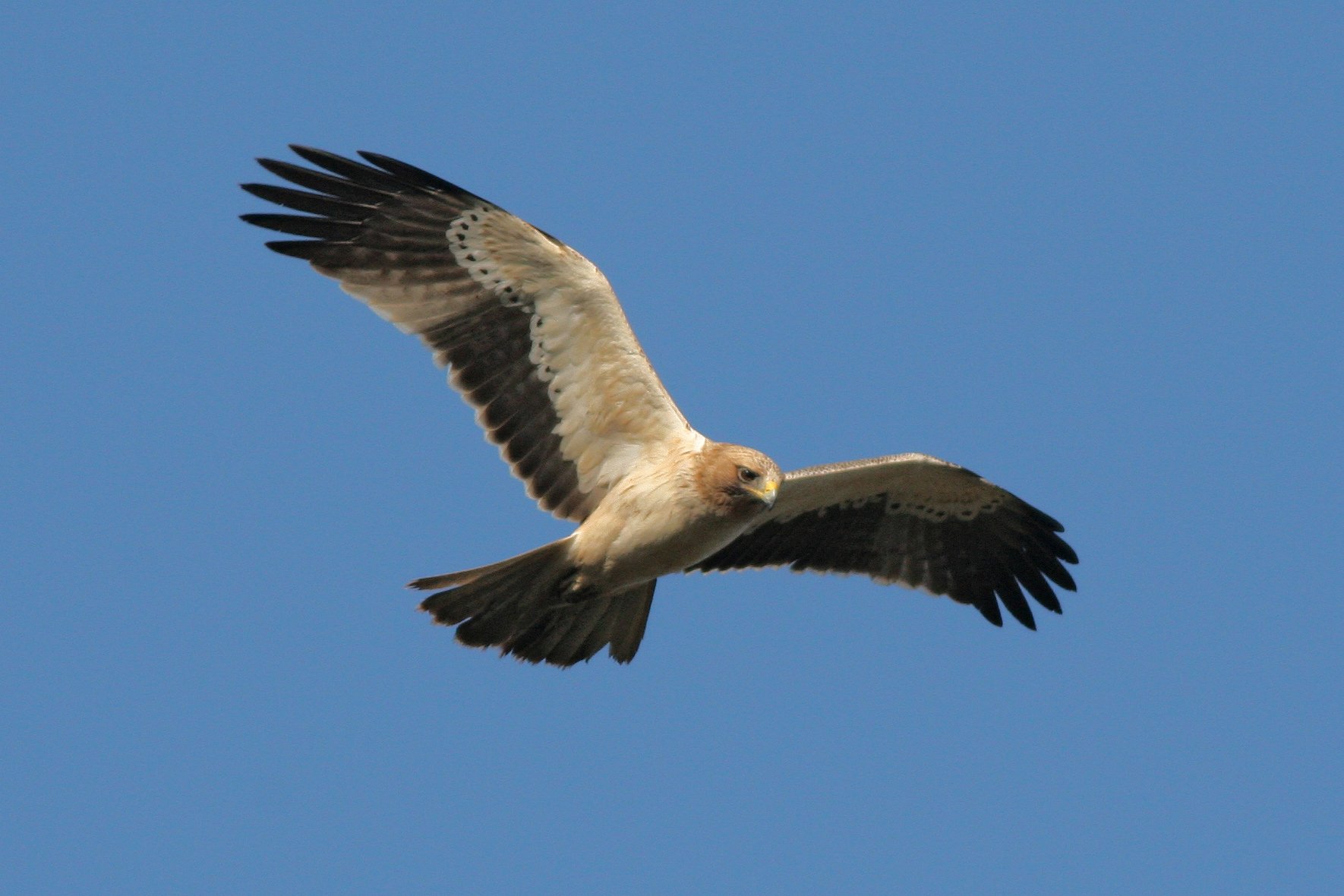
WHAT TO EXPECT
From the arid steppe of Belchite to the pine forests and high peaks of the Pyrenees and the towering rock pinnacles of Riglos to the south, this region makes a truly spectacular setting for a wildlife holiday.
We visit in late May, when birds such as Lammergeier, Wallcreeper and Citril Finch are nesting, and the rare and exquisite Lady’s Slipper Orchid should be in flower. This is also an excellent time for butterflies.
Our tour starts with three nights in a comfortable hotel on the Steppe near Belchite before we move northwards to another comfortable and conveniently located hotel not far from the mountain town of Jaca.
The climate in the mountains is typically warm and sunny, with daytime temperatures in the range of 12-26C (53-79F), but it can be chilly early morning. As with any upland area, periods of rain or showers, low cloud or poor visibility are possible at any season. In summer, however, we find it is often possible to avoid any localised bad weather by moving to a different altitude either up or down the mountains!
Further south when we are on the steppe, it is likely to be hotter but we will start early and may take a traditional Spanish siesta in the heat of the day.
Good photographic opportunities for birds, butterflies and plants. Highly scenic.
BIRDS
120-160 species
BUTTERFLIES
45-75 species, depending on the weather before and during our visit.
ACCOMMODATION
Eight nights accommodation in Spain, starting with three nights at a comfortable hotel in Belchite. We then head northwards to Jaca where we are based at a good and comfortable hotel chosen for the convenience of its central location within the Aragón Valley and ease of access to all the key sites. All rooms are ensuite.
MEALS
All main meals are included in the tour price, commencing with either a light lunch or dinner in Spain on Day 1 (meal plan can vary according to flight schedules) and concluding with a packed lunch on Day 9.
Buffet breakfasts and dinners at the hotels, where the restaurants offer original, tasty and varied local cuisine. Lunches will usually be picnics, taken at some wonderfully scenic spots although we may mix this up with some tapas lunches at local restaurants on some occasions.
WALKING
Easy, covering up to about 3 miles in any one day, over mainly easy terrain.
This tour is not strenuous and should be suitable for anyone of reasonable fitness and used to a little regular walking. As one would expect of any visit to the mountains, there may be occasional short walks on steeper slopes but these will always be taken at a gentle pace.
During our time on the steppe, the area is generally flat.
Walking boots with stout corrugated soles for grip advised in the mountains. Comfortable walking shoes are suitable at lower elevations.
TRAVEL
Despite the end of many pandemic restrictions, it is still proving extremely difficult to predict future flight prices and schedules. As a result, we have taken the decision to continue to price our holidays as excluding international flights.
To keep the process as simple as possible, we are working very closely with a dedicated agent at Travel Counsellors, Sacha Barbato, who is essentially now our “in house” flight consultant.
Sacha is a highly experienced independent ATOL bonded travel agent, and his contact details are as follows: sacha.barbato@travelcounsellors.com and 01603 360099
He will be able to advise you which flights we are recommending for each holiday and will be able to book these for you.
This will also sometimes give you the option to travel from a regional airport if you prefer.
Ground Transport By minibus
Tour Gallery
View a gallery of images for this tour below, click on an image to view as full size with caption

